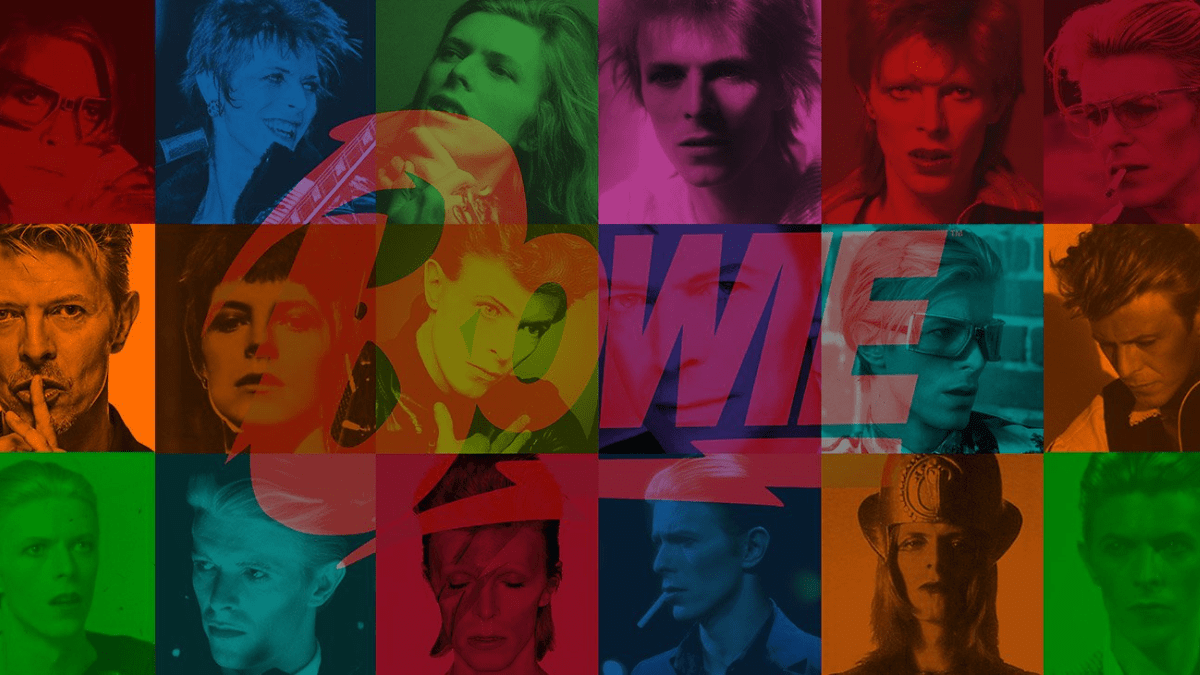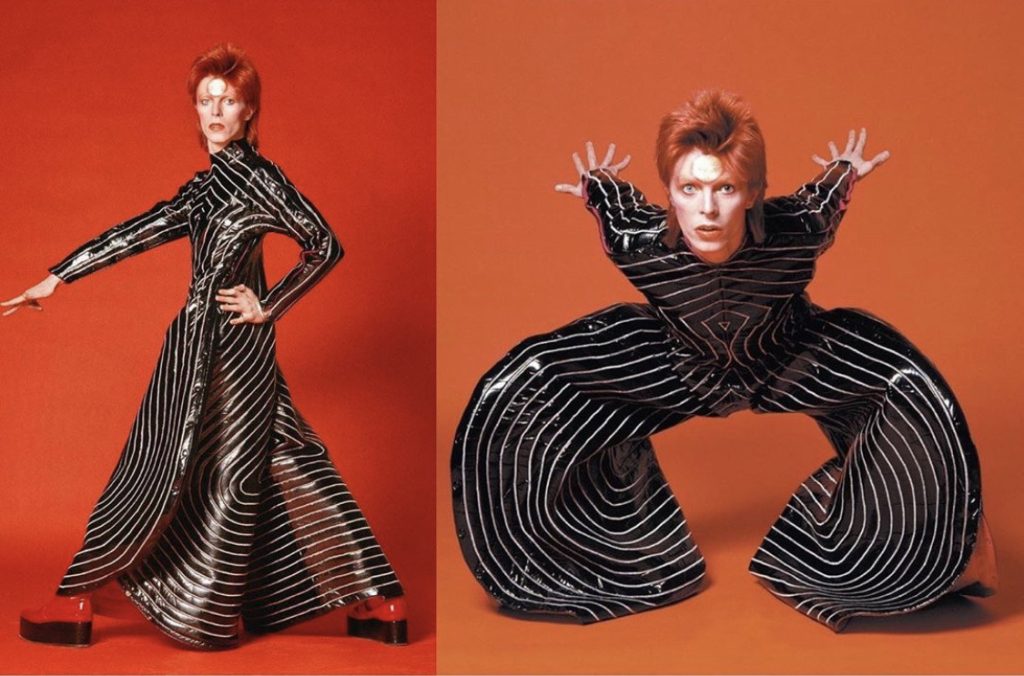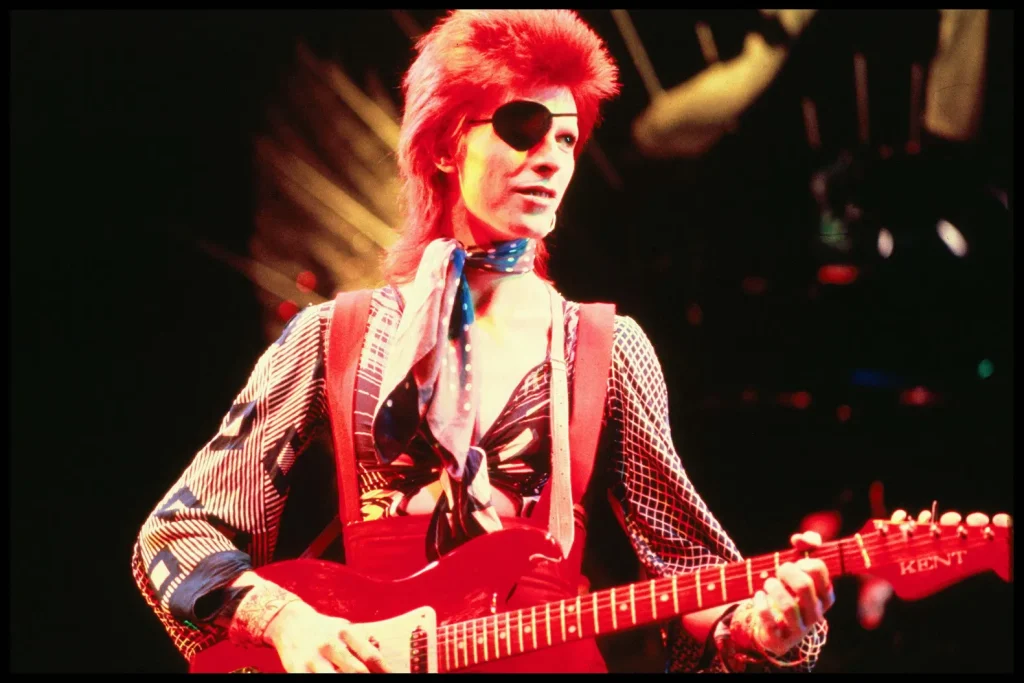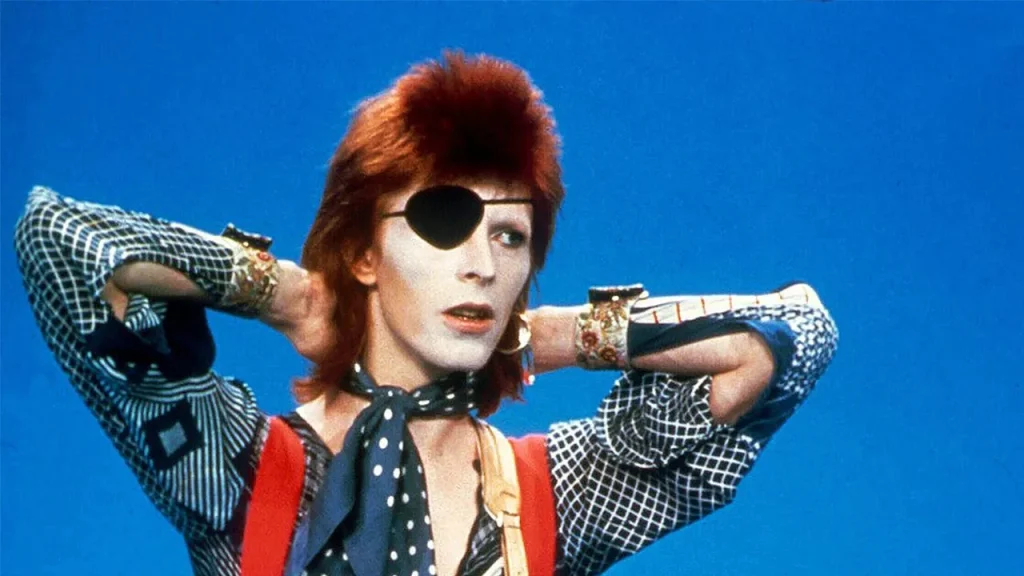David Bowie: A Fusion of Art And Identity

David Bowie, a chameleon of musical reinvention, changed the landscape of contemporary music forever. His sonic exploration and kaleidoscopic persona were not merely expressions of artistry; they were a fusion of music and identity that went beyond conventional boundaries.
Bowie’s musical palette was a vibrant spectrum, constantly evolving and defying categorization. From the glam rock theatrics of ‘Ziggy Stardust’ to the electronic experiments of the ‘Berlin Trilogy,’ Bowie’s ability to seamlessly blend genres showcased a mastery that few artists can claim. It wasn’t just about creating music; it was about crafting an ever-changing sonic identity that mirrored his fluid sense of self.

One of Bowie’s most iconic periods was the glam rock era, characterized by the flamboyant and androgynous ‘Ziggy Stardust.’ With a shock of orange hair and theatrical costumes, Bowie embraced a persona that blurred the lines between reality and performance. The music of ‘Ziggy Stardust’ and ‘Spiders from Mars’ was a fusion of rock, pop and avant-garde influences, creating a sound that resonated with the rebellious spirit of the ’70s.
As the ’70s gave way to the ’80s, David Bowie continued his musical odyssey with the release of ‘Heroes,’ an album recorded in Berlin during a period of personal and artistic reinvention. The title track, with its anthemic chorus and ambient production, became an anthem for individual resilience against the backdrop of the Cold War.
Bowie’s collaboration with Brian Eno during this time marked a departure from mainstream pop, embracing a more experimental and electronic sound that pushed the boundaries of conventional rock music.

The fusion of art and identity reached new heights with Bowie’s exploration of identity politics and self-expression. His album ‘Let’s Dance’ was a departure from the experimentalism of the Berlin Trilogy, embracing a more commercial sound infused with funk and soul influences. The title track, along with hits like ‘Modern Love’ and ‘China Girl,’ showcased Bowie’s ability to adapt to changing musical landscapes while maintaining his distinctive voice.
Beyond the music, Bowie’s visual identity was an integral part of his artistic expression. From the iconic lightning bolt across his face as ‘Ziggy Stardust’ to the clean-cut elegance of the ‘Thin White Duke,’ each persona was a carefully curated visual representation of the music and themes he explored. Bowie’s music videos, often avant-garde and visually striking, further reinforced the symbiotic relationship between his music and his ever-evolving image.

In the twilight of his career, David Bowie released ‘Blackstar,’ an album that served as a poignant farewell. Released just days before his death, the album delved into themes of mortality and legacy, showcasing Bowie’s unwavering commitment to pushing artistic boundaries until the very end. The jazz-infused title track, with its enigmatic lyrics and haunting melody, stands as a testament to Bowie’s ability to create music that transcends time and genre.
Bowie’s musical palette was not confined to a single genre or era; it was a canvas on which he painted the ever-shifting hues of his identity. His legacy is not just a collection of albums but a sonic tapestry that continues to inspire and influence generations of artists who dare to defy conventions and embrace the ever-changing palette of self-expression.








